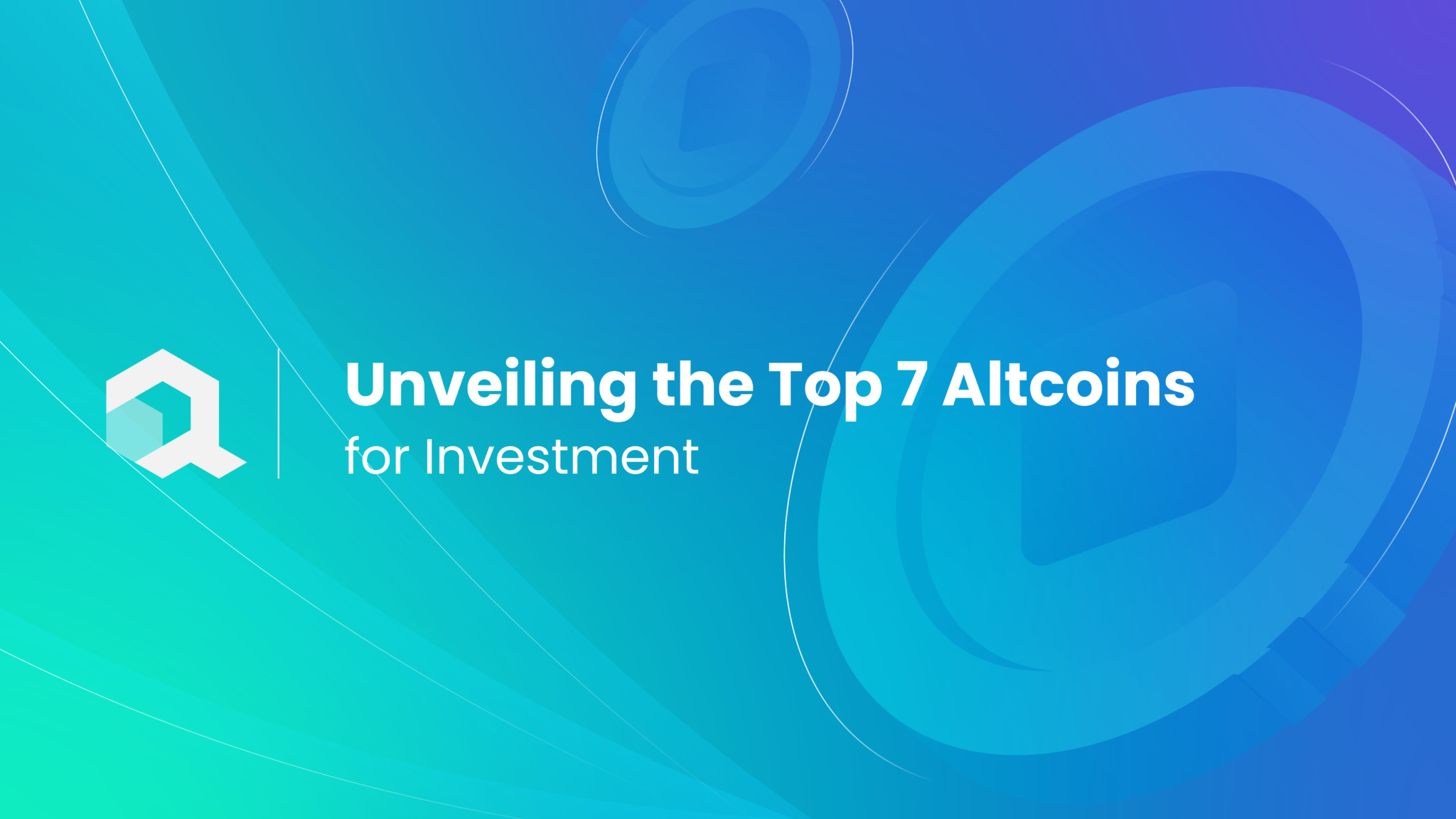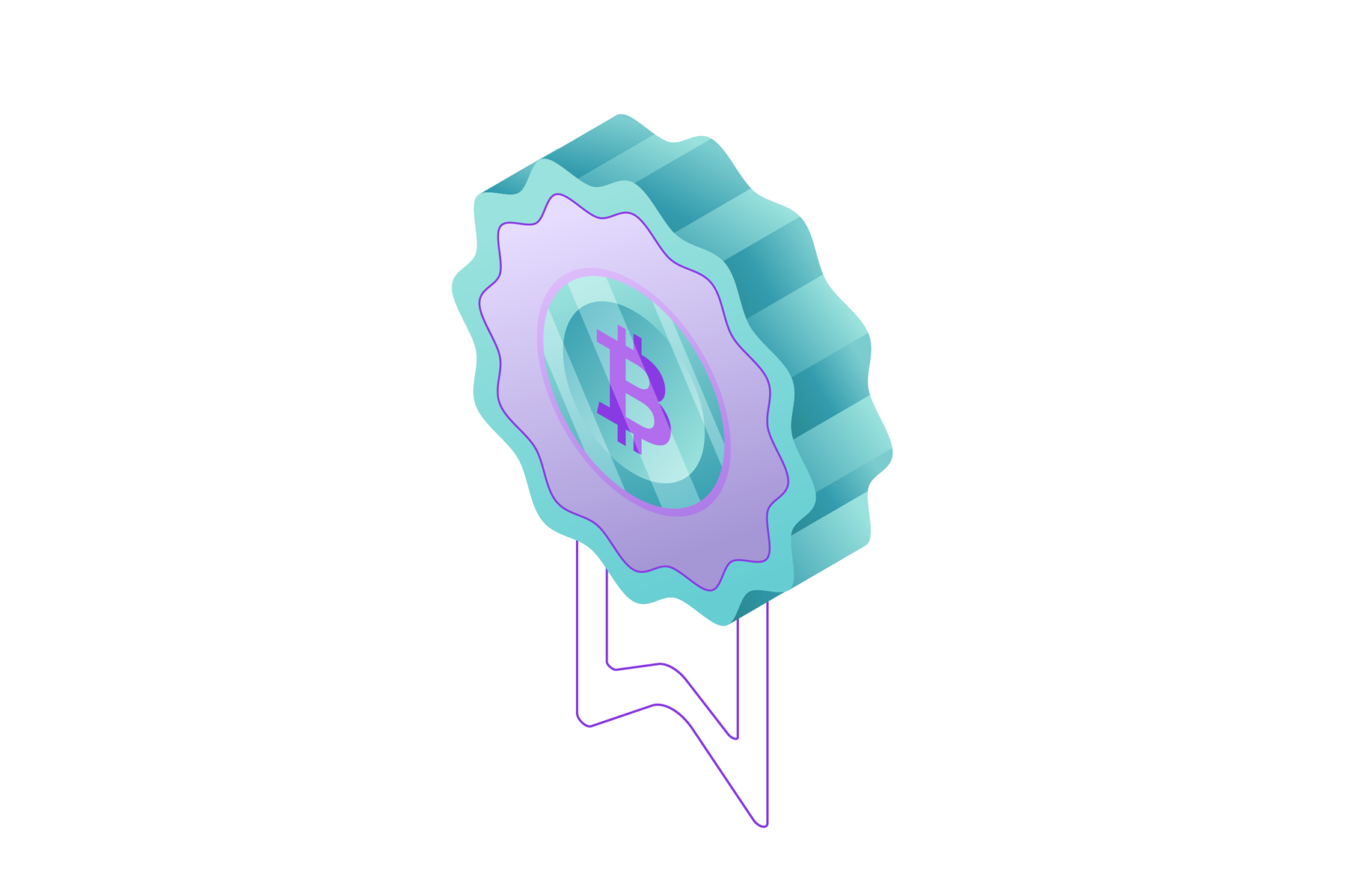
Alts have emerged as an exciting force in the fast-changing world of crypto. Apart from Bitcoin, there are coins with more upside potential? As altcoins, that is to say alternative digital currencies other than the pre-eminent Bitcoin itself, they form an increasingly comprehensive and dynamic investment field. There have been an explosion of these digital assets in the cryptocurrency market. Each has a unique value proposition, and is designed to serve different niches within blockchain-land.
These selected altcoins, discussed in this article barely scratch the surface of how much room there is–not just for variation but also innovation. This diversity reflects the ongoing development and experimentation within cryptocurrency. These digital assets, which can have high volatility and large returns, are attracting a lot of attention. This article explores the realm of altcoins, focusing on their characteristics and introducing seven top picks for investment.
Understanding Altcoins

Altcoins, a contraction of alternative cryptocurrencies, describe an ever-growing category of digital assets besides Bitcoin itself. Altcoins excel in solving problems that Bitcoin cannot solve on its own. Bitcoin is seen as money and a store of value. Alts have carved out numerous niches in the world’s oceans of crypto. Ethereum, for instance, has adopted the concept of smart contracts. Agreements that are programmable and self-executing take place on its blockchain. This development has opened up the path for decentralized applications (DApps) and Decentralized Finance platforms.
Monero and Zcash are two privacy-focused altcoins that aim to provide users with a greater degree of anonymity than traditional cryptocurrencies. These coins, which focus on privacy protection, utilize sophisticated cryptography to hide transaction details. They appeal to people who want a very high degree of secrecy in their financial operations.
Furthermore, altcoins have expanded thoughts on how a consensus can be established beyond Bitcoin’s proof-of-work. Proposals such as proof of stake and delegated proof of stake are two approaches under discussion. These alternative approaches seek to resolve such problems as high energy consumption, problematic scaleability and the lack of network security that plague current blockchains.
Both investors and enthusiasts are attracted to altcoins, not only for the prospect of making a quick bundle but also because they offer alternative approaches. The mercurial nature of the cryptocurrency market means there is always a new project finding its way to an opening and making something for itself in today’s blockchain ecosystem.
In general, then, altcoins help to diversify the world of cryptocurrencies. They have a variety of features and capabilities that are different from what Bitcoin has. In addition to the Bitcoin, this exploration and development of alternative cryptocurrencies is a part of an ongoing story about decentralized and efficient financial systems.
7 Best Altcoins to know in 2024

The cryptocurrency market is known for its volatility, so investing in altcoins requires significant thought and due diligence. Although no investment is risk-free, here are seven altcoins that have caught attention in some way or another. However, do your own research and make sure you are aware of the risks before buying anything.
1. Ethereum (ETH)
Ethereum, which helped launch the cryptocurrency movement and offers much more than being just a digital currency has created an open-access platform for DApps—decentralized applications. In addition to this, it also provides smart contracts (self executing computer programs) that can record repeatedly on previous data.
Its programmable blockchain lets developers build a host of applications ranging from decentralized finance (DeFi) protocols to NFT. The underlying nature of Ethereum’s blockchain will be transformed as it migrates onto Ethereum 2.0, which involves switching from a proof-of-work to a proof -of stake consensus mechanism in an effort to solve problems related to scaling. This upgrade not only improves efficiency but also conforms to a more sustainable spirit, allowing Ethereum to maintain its position as one of the most important players in the blockchain empire.
2. Binance Coin (BNB)
Since launch, Binance Coin has broken beyond its role as a utility token of fee discounts on the now-leading exchange. Besides helping to lower transaction costs, BNB is integral in the larger Binance universe.
It is an important part of token sales on the Binance Launchpad, acting as a crowdfunding platform for new projects. Also BNB is an important asset on Binance Smart Chain, a parallel blockchain supporting smart contracts. BNB is not only useful as a way of reducing transaction fees, it has also shown its adaptability and usability in all aspects of the cryptocurrency exchange.
3. Cardano (ADA)
With an engineering mindset at the forefront, Cardano leaps ahead in blockchain development, focusing on scalability and sustainability as well as interoperability. Its layered architecture, separating the settlement layer from the computation layer, adds flexibility and security.
Several recent updates to Cardano, including the implementation of smart contracts through this upgrade, reveal its commitment to scientific principles. In this way Cardano is convincingly posing as a platform which may contain many different decentralized applications–adding thoughtfully, one might say–to the development of the whole ecosystem.
4. Polkadot (DOT)
Polkadot, which was founded by an Ethereum co-founder and addresses interoperability issues among blockchains through a relay chain linking different chains. This architectural design means that different blockchains, called parachains or parallel chains, can transcend boundaries to share data and transactions.
In this way the various blockchains on a single system help form an integrated whole with greater scalability in its interconnections. Indeed, with a focus on safety and performance along with the absence of hard forks, Polkadot is poised to become an important enabler of communication and cooperation between different blockchain networks. And as Polkadot continues to develop, its role in fostering a more connected blockchain world becomes clearer all the time.
Also Read: How Market Making Algorithms Works?: The Future Of Crypto
5. Solana (SOL)
Solana differentiates itself with a high-performing blockchain, where transactions are executed quickly and inexpensively. Its novel Proof of History (PoH) consensus mechanism, along with other features, gives it the ability to scale.
Solana is aimed at performance, the platform has become an attractive one for decentralized applications (DApps) and projects in the burgeoning new world of decentralized finance (DeFi). Its ecosystem covers a broad spectrum of applications, from gaming platforms to decentralized exchanges. Through its prioritization of scalable and cost-efficient blockchain, Solana is in a position to compete with other high-performance chains.
6. Chainlink (LINK)
Chainlink is a decentralized oracle network that works as an intermediary between smart contracts and real-world data. Oracles help smart contracts to have access to data such as prices, weather conditions and any other external information.
Chainlink’s decentralized oracle network eliminates the single point of failure and provides Fulcrum with secure, reliable data. Its technology is used in decentralized finance (DeFi), insurance, supply chain and more. Their oracle services, which provide reliability and security help increase the overall functionality of smart contracts in a wide range of industries.
7. Ripple (XRP)
Ripple’s digital payment protocol and cryptocurrency, XRP helps to speed up low-cost cross-border transactions. XRP’s rapid settlement times depend on the Ripple Protocol Consensus Algorithm (RPCA).
Although it has encountered regulatory problems in the process of developing this approach to real-time gross settlement systems and currency exchange networks, XRP is attracting attention from both financial institutions and remittance services. Ripple hopes to simplify cross-border payments by giving banks a more efficient alternative than existing banking systems. Yet with uncertainties regarding regulations, Ripple’s novel approach to transnational payments continues exerting influence over conversations about the future of financial transactions.
Altcoins Investment Considerations

When it comes to investing in altcoins, there are special characteristics and risks from the perspective of cryptocurrency market. Here are key considerations for investors looking to engage in altcoin investments:
– Diversification
Diversification of a cryptocurrency portfolio is the indispensable basic strategy for managing risk and avoiding exposure to market fluctuations. While Bitcoin is the cornerstone, altcoins provide variety by offering different risk-reward profiles. An ideal portfolio is one with exposure to all categories of altcoins, each having its own purpose.
For instance, investing in smart contract platforms like Ethereum, privacy coins such as Monero or Zcash and decentralized finance (DeFi) tokens spreads the investment across different areas within the cryptocurrency space. In addition to reducing the effects of underperformance in any given asset, diversification is capable of creating untold wealth by way of capturing differing trends and inventions that are constantly on display within this fast-moving cryptocurrency environment.
– Research and Due Diligence
Investing in altcoins requires thorough research and due diligence. This means an in-depth assessment of the altcoin project, from pouring over its whitepaper to understanding its team, studying their technological infrastructure and appraising whatever it is they’re trying to do. Looking at the development roadmap and historical achievements gives you a clue about its long-term viability.
Another important factor is community support. If the altcoin has a robust and active user base, its adoption will increase along with its strength to resist possible shocks from attacks or frauds of this nature. Because these factors have a large impact on the worth and stability of altcoins, staying up to date about partnerships, collaborations as well as technical improvements is very important. Through in-depth research, investors are able to make the right calls and can sort out truly promising projects on one hand from those without much potential on the other.
– Risk Management
Risk management is integral to handling the turbulent cryptocurrency markets. Since prices are intrinsically fluctuating, investors must set firm risk control structures. For example, pre-established stop points at which assets are automatically sold to minimize loss. Finding the right ratio for how much of your portfolio should be devoted to altcoins lets you have a well-balanced, risk appropriate position in these assets. Knowing that volatility and risk are the hallmarks of today’s new technologies makes it possible for investors to make informed judgments. Risk management practices can help investors by protecting their capital while giving them choices consistent with the level of risk tolerance and investment goals.
– Market Trends and Sentiment
Keeping on top of market trends and sentiments is key to staying competitive in the cryptosphere. Social media platforms, forums and news outlets are great barometers of sentiment in the cryptocurrency community. These sources can provide indications of market sentiment, though you need to approach them with caution.
Sentiment itself is often the result of speculation. By adding sentiment analysis to fundamental and technical research, we get a fuller picture of market conditions. By integrating sentiment analysis, investors can spot potential trends and forecast market movement to make informed decisions.
– Regulatory Environment
For altcoin investors, understanding the regulatory environment is essential. Regulatory changes can affect the worth of particular assets as well as their status under law. Keeping abreast of regulations governing cryptocurrency both in your own jurisdiction and abroad will help investors prepare for potential obstacles.
As for the market perception of altcoins and even overall cryptocurrency, change comes from regulation. Investors need to evaluate how regulations are changing in that area and what the overall climate is for cryptos. Such a proactive approach means that investors can adjust their investments in accordance with regulatory changes and make decisions based on legal compliance.
– Liquidity
For smooth trading, the liquidity of an altcoin is important. Liquidity means that an asset can be bought or sold in the market without causing too much of a price fluctuation. Altcoins that are liquid will be traded easily, and investors can freely enter or exit a position when the price has been reached.
In contrast, low liquidity can make it difficult to execute trades and lead to ill-timed prices. A practical step to make sure there is enough liquidity is verifying the altcoin’s trading volume on trustworthy exchanges. higher efficiency in portfolio management and lower impact of trading costs, enhanced trade-fluidity.
Conclusion
When investing in altcoins, investors must do so with an open mind. The chosen altcoins–Ethereum, Binance Coin, Cardano Polkadot Solana Chainlink and Ripple among them are only a sample of the thousands upon thousands of projects out there. These alternatives go beyond mere digital currencies, embracing smart contracts, decentralized finance (DeFi), privacy features and more. But, as with any investment, sailing among the altcoins requires constant alertness and flexibility. The world of altcoins moves quickly and unpredictably. It is therefore quite important to stay on top of the latest news, along with doing thorough research before making a decision you can back up 100 percent should developments turn out much as expected but in exactly which direction was once again especially hard to say.
However, as the cryptocurrency market evolves so does a canvas of opportunities and challenges for investors. Each altcoin’s unique value propositions help make the ecosystem more diversified. Diversity not only represents the technological innovation within the space, but also presents investors with a strategic investment portfolio. Recognize however, that the altcoin market is highly volatile and no investment strategy succeeds until one understands each individual project as well as general trends in the market. If investors choose to adopt a proactive and well-informed attitude, then this will be another area of the ever growing world of cryptocurrency that can complement other parts infor ming their overall investment portfolio.
Disclaimer: The information provided by Quant Matter in this article is intended for general informational purposes and does not reflect the company’s opinion. It is not intended as investment advice or a recommendation. Readers are strongly advised to conduct their own thorough research and consult with a qualified financial advisor before making any financial decisions.

I craft stories that make complex ideas clear. I simplify the blend of data science, machine learning, and crypto trading, showcasing how advanced tech and quantitative models analyze data for informed trading choices. Join me in exploring the realm of quantitative trading, where my narratives make intricate concepts easy to grasp.
- Alifia Berizkyhttps://quantmatter.com/author/alifia-berizky/
- Alifia Berizkyhttps://quantmatter.com/author/alifia-berizky/
- Alifia Berizkyhttps://quantmatter.com/author/alifia-berizky/
- Alifia Berizkyhttps://quantmatter.com/author/alifia-berizky/
